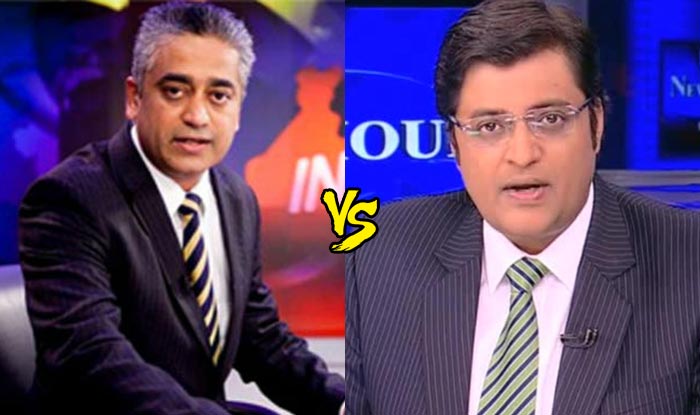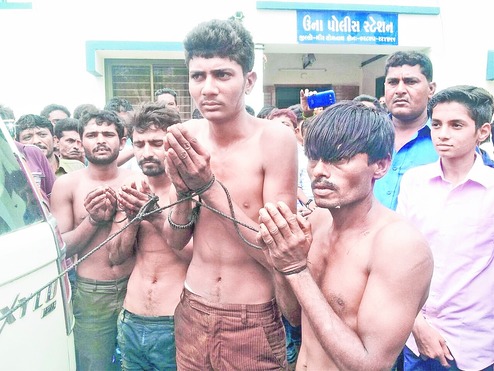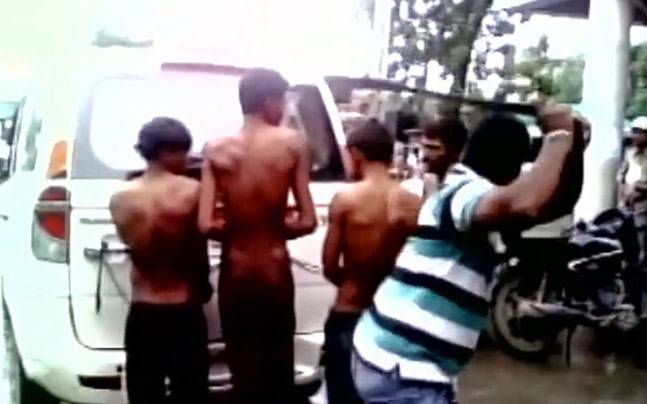
Several hundred people from all walks of life (Civil Rights Activists, Labour Activists, Peace Activists, Feminists, Queer Activists, Advocates, Students, Workers, Artists, Writers, Academics, Filmmakers,Independent Left Activists, and unaffiliated individuals across generations, from Jammu & Kashmir, from Delhi, and from other parts of India) gathered this afternoon (July 13, 2016) for a silent protest march and meeting at Jantar Mantar, to protest against the last three days of allegedly brutal assault by police and security forces in the Kashmir valley that have left 35 dead, several blinded (especially due to the indiscrimnate use of pellet guns) and scores of people critically injured over the last three days.
The protestors at Jantar Mantar wore black bands, and carried signs condemning the state’s violence. The protestors carried signs with the names of each of the thirty six individuals who have been identified as having died over the last three days. Each sign identified a deceased person by name, the town or village they were from, and asserted that they “will not be forgotten“. In this way, this corner of India’s capital bore witness to each person, man, woman or child killed by the Indian state since troops began firing into protests that began to mourn the extra-judicial killing of Burhan Wani three days ago.
These citizens of Delhi, without qualification or hesitation, marched to say that they were with the people of Kashmir in this hour of their trials and grief. There was a brief attempt made by a motley group of right wing ‘nationalists’ to heckle and abuse the protestors, while shouting slogans in favour of the Indian Army’s conduct in Jammu & Kashmir. However, the handful of noisy, counter-protesting ‘Patriots’ who had assembled to gloat over the killings in Kashmir were outnumbered by the silent protestors. Their powerful silent resolve to stand their ground and refusal to be provoked by the hate filled and abusive sloganeering of the counter-protestors ensured that after a brief and noisy interregnum the apologists of state violence found it advisable to melt away into the humid afternoon heat of Jantar Mantar. The silent protest against the killings in Kashmir continued, unabated.
At the conclusion of the silent protests, some of those who had come in solidarity with the people of Kashmir made brief statements. We are presenting abbreviated highlights from three of these statements – by Shabnam Hashmi, Kavita Krishnan and Shehla Rashid.
Shabnam Hashmi, an activist committed to peace between communities, spoke of the urgent need to put an end to the climate of impunity that makes the state become a murderer in Kashmir. She pointed out the contrast between the way in which violent, armed mobs have been dealt with in Haryana and Gujarat recently and the way in which troops open fire into unarmed protestors in Kashmir.
Kavita Krishnan, politburo member of CPI (ML-Liberation) and secretary, All India Progressive Women’s Association, spoke about the need to do away with the Armed Forces Special Powers Act and the urgent necessity to initiate dialogue without preconditions with all sections of society in Jammu and Kashmir. She stressed the need for all Indian citizens to come out and say that the Indian state cannot continue to butcher the people of Kashmir in their name.
Shehla Rashid, an activist of the All India Students’ Association and Vice-President of the Jawaharlal Nehru University Students’ Union, who is from Kashmir, spoke about how the violence of the Indian State, it’s ongoing humiliation of the population, gives rise to a whole generation of young people that is completely alienated. She strongly condemned the way in which the mainstream media demonizes young Kashmiris whose every protest, even if peaceful or unarmed, is seen as support for ‘terrorism’ while choosing to ignore the hate-speech of those who take on the mantle of ‘nationalism’ and keep screaming ‘Bharat Mata Ki Jai’.
She also said that no Indian soldier should have to die in Kashmir, and that this can be ensured by a comprehensive de-militarization of Jammu and Kashmir, which can be achieved only when all the peoples of Jammu and Kashmir can feel that really are the shapers of their destiny in a peaceful, just and democratic manner.
This meeting in Delhi sent out a strong signal to the suffering people of Kashmir that not every Indian citizen is brainwashed by the tired narrative of the state and the relentless propaganda about Kashmir by sections of the mainstream Indian media.
More protests are being planned in different cities, starting with one in Kolkata tomorrow. We at Kafila urge our readers and contributors to send in reports, photo-narratives,first person accounts of protests that they may be involved in as participants or organizers, whether in Kashmir, or in any Indian city, town, campus, settlement or workplace. Let’s work together to compel an end to the violence in Kashmir and to ensure that it does not carry on.
Not in our name! In solidarity with the people of Jammu & Kashmir.
Statement Issued by Indian Citizens
We write this in anguish at another alarming spiral of violence in Kashmir, when a discredited old playbook has yet again been deployed to wreak havoc with civilian life.
Kashmir’s escalating violence follows a familiar pattern: a killing, a funeral where rage is vented through slogans and stones, and volleys of lethal gunfire in response. In 2010, this cycle rolled on repeatedly through four months, claiming over 110 lives, mostly of Kashmiri youth, including a number who were too young to know.
Nothing has been learnt from that year of catastrophe. The trigger for the current surge of unrest in Kashmir was the killing on July 8 of Burhan Wani, a militant of the Hizbul Mujahedin. The circumstances of Wani’s killing are yet to be fully explained. It is nonetheless ironic that it occurred on the very day the Indian Supreme Court issued a far-reaching judgment in the context of fake encounters in the state of Manipur, emphasising the illegality of the use of excessive and retaliatory force by the army, security forces and police. These strictures apply even in disturbed areas under AFSPA. Kashmir is an arena where the Supreme Court’s observations that the rule of law would apply “even when dealing with the enemy”, and that indeed, whatever the challenges, “the country’s commitment to the rule of law remains steadfast”, are breached on a daily basis.
Available accounts of Burhan Wani’s life in militancy indicate that he was as a 16-year old, embittered and radicalised during the 2010 turmoil by the casual humiliations heaped on ordinary Kashmiris by the mass deployments of security personnel. He witnessed repeated violent incursions into his home and the harassment of near relations in what are called “crackdowns”, in terminology that has entered the youth argot of the valley. The death of his brother in a police encounter,when he had nothing to do with the militancy, is believed to have further hardened his resolve.
Burhan Wani’s life story should be cautionary warning that the heavy-handed, militaristic Indian approach to Kashmir, has only led to a quarter century of siege and growing alienation.
Wani’s funeral on July 9 in the southern Kashmir town of Tral witnessed a gathering of several tens of thousands. As protests broke out in this and other locations, security forces responded with maximum force. The death toll of thirty in a matter of three days, tells its own grim story.
Excessive and indiscriminate lethal force continues to be used for purposes of law enforcement. This is in brazen contempt of the U.N. Basic Principles on the Use of Force and Firearms by Law Enforcement Officials, which do not allow for departure even in exceptional circumstances such as internal political instability or public emergency. Pellet guns, introduced in 2010 for crowd control, purportedly on the ground that it injures and does not kill, have caused permanent injuries and irreversible loss of eyesight to at least 92 young men.
The upsurge of civil unrest comes after a long sequence of intelligence reports that flagged rising discontent at the new political arrangements in Jammu and Kashmir. The BJP’s arrival in the portals of power and its determined pursuit of a majoritarian agenda, have much to do with this.
Curiously, the intelligence warnings have focused on widening access to the internet and social media as a disruptive influence. This diagnosis which focuses on the symptoms rather than underlying realities, has fed directly into the shutdown of internet services in Kashmir, the thirteenth such closure in three years.
Certain recent observations of the Supreme Court, though made in reference to Manipur, bear repetition as general principles. Mass deployment of the army and security forces in aid of civil authorities always is predicated on the premise that “normalcy would be restored within a reasonable period”. If normalcy is not restored for a “prolonged or indeterminate period”, it would be firm evidence of the “failure” of the civil administration or of the armed forces, or both.
Whatever the case, an unending state of unrest could not “be a fig leaf for prolonged, permanent or indefinite deployment of the armed forces as it would mock at our democratic process”.
The time is long past, if ever there was one, when a solution to the Kashmir problem could be achieved through force. Continuing recourse to this option and the prolonged and bloody stalemate that has ensued, have fuelled a mood of anger and despair in Kashmir. But with firmer iterations of the military option from the highest political leadership, a dark mood has taken hold in the rest of the country, a doubling down on the current strategy and a tendency to brush off every manifestation of failure with hateful and intemperate rhetoric directed at the people of Kashmir.
We recall the statesmanship shown by Prime Minister Atal Behari Vajpayee in 2003, when he went to Srinagar during a particularly dark time, held out a “hand of friendship” to Pakistan and said that the dialogue on Kashmir would be held within the paradigm of humanity (insaaniyat ke daayre mein). It is particularly unfortunate that no Union Minister has visited Kashmir in this crisis and that the state leadership and elected legislators are reportedly too insecure to venture out among the people.
We call for urgent steps from the Central and State government to prevent civilians being killed and injured, and immediate steps towards demilitarisation of the Valley and an inclusive political initiative. This has to go along with an urgent review of AFSPA, leading to its repeal alongside the entire constellation of special security laws that reward atrocities on civilians and encourage impunity. We urge all political parties to pressure the Government to open a political dialogue in good faith with all relevant parties to ensure that the bleeding wounds of Kashmir are staunched.
Abdulhafiz Lakhani. Editor Gujarat Siyasat. Ahmedabad
Abha Bhaiya, Founder And Director, Jagori Rural
Ali Javed, Pwa
Amar Kanwar
Ambarish Rai, National Convenor, Rte Forum
Amir Rizvi, Communication Designer, Mumbai
Amitadyuti Kumar, Working President, Association For Protection Of Democratic Rights (Apdr)
Anamika Priyadarshini, Phd, Assistant Professor, Council For Social Development
Angana Chatterji
Anita Ghai, Prof In Ambedkar University Delhi
Anjali Monteiro Prof. Tiss, Mumble
Anjuman Ara Begum, Human Rights Activist, Guwahati, Assam
Annie Namala – Social Activist
Anuradha Chenoy, Prof. Jnu
Anuradha Kapoor, Social Activist
Apoorvanand, Prof. Delhi University
Aruna Roy
Arundhati Dhuru- Napm
Asad Ashraf, Journalist
Ashish Kothari, Pune.
Ayesha Kidwai, Prof Jnu
Azima, Social Activist, Gujarat
Babloo Loitongbam
Biraj Patnaik
Brp Bhaskar
Chaman Lal, Retired Prof. Jnu
Chayanika Shah
Clifton D' Rozario, Manthan Law, Bengaluru
Dhruva Narayan, Managing Editor, Samajik
Dinesh Mohan
Dr. Aftab Alam, Du, Academic
Dr. S. Anandhi
Dr. Sandeep Pandey
Dr. Umakant, Independent Scholar, New Delhi
Dr. Walter Fernandes, Senior Fellow, North Eastern Social Research Centre
Dunu Roy, Engineer
Fr Cedric Prakash, Human Rights Activist
Gautam Chaudhuri
Gautam Mody, General Secretary, New Trade Union Initiative
Harsh Kapoor
Hasina Khan
Henri Tiphagne Hrda _ India
Indira Jaising
James Dabhi, Social Activist, Gujarat
Jashodhara Dasgupta, Social Activist, New Delhi
Javed Malick
Jaya Menon, Archaeologist
Jayati Ghosh, Prof Jnu
Johanna Lokhande – Independent
K. M. Shrimali, Former Professor, Delhi University
K.P. Jayasankar Prof. Tiss, Mumbai
Kamal Chenoy, Prof. Jnu
Kamayani Bali Mahabal, Feminist And Human Rights Activist
Karthik Bittu, University Of Hyderabad
Karuna Dietrich Wielenga, Researcher, Chennai
Kavita Panjabi, Prof. Jadavpur University
Ketaki Chowkhani, Phd Student, Tiss, Mumbai.
Kumar Sundaram, Cndp
Madhuresh, Napm
Madhusree Dutta, Filmmaker, Mumbai
Maitreyi Krishnan, Manthan Law, Bengaluru
Malini Subramaniam
Manisha Sethi, Jamia Millia Islamia, New Delhi.
Mannika Chopra, Managing Editor, Social Change
Manoranjan Mohanty, Retired Professor, University Of Delhi
Mansi Sharma, Delhi
Mazin Khan, Pharos Media & Publishing
Meena Gopal Prof. Tiss
Mihira Sood, Lawyer
Mohan Rao
Mohd Azam, Entrepreneur, Hyderabad
Monisha Behal
Muniza Khan, Researcher Cum Activist, Gandhian Institute Of Studies
Nagmani Rao, Pune
Nandini Rao, Women's Rights Activist, New Delhi
Nandini Sundar, Professor, Department Of Sociology
Navaid Hamid, President All India Muslim Majlis E Mushawarat
Neelanjana Mukhia, Feminist Activist
Neeraj Malik
Nivedita Menon
Ovais Sultan Khan, Anhad
Preetha Nair, Journalist Ians
Prof Rooprekha Verma, Lucknow
Rahul Roy
Rajni Arora, Social Activist
Ravi Nair, South Asia Human Rights Documentation Centre
Roop Rekha Verma (Saajhi Duniya)
Rudolf C. Heredia, Indian Social Institute
Saba Dewan
Shabnam Hashmi, Social Activist, Anhad
Shashank Kela, Writer, Chennai
Shehla Rashid Shora, Jnu
Shuddhabrata Sengupta, Artist, Raqs Media Collective, Delhi
Sudhir Pattnaik
Sujata Patel, President, Indian Sociological Society (2016-17)
Sukhirat Anand, Publisher, Punjab
Sukumar Muralidharan, Journalist
Suranjan Sinha, Sociologist
Tapan Bose, Documentary Filmmaker
Teesta Setalvad
Thomas Palliithanam
Uma Chakravarti
Vahida Nainar
Vani Subramanian, Saheli
Vidya Bhushan Rawat, Social Activist
Vineet Tiwari, Writer, Pwa
Virginia Saldanha
Vrinda Grover, Lawyer
Zoya Hasan, Professor Emeritus Jnu
 /sites/
/sites/ s/2(1)jpg
s/2(1)jpg

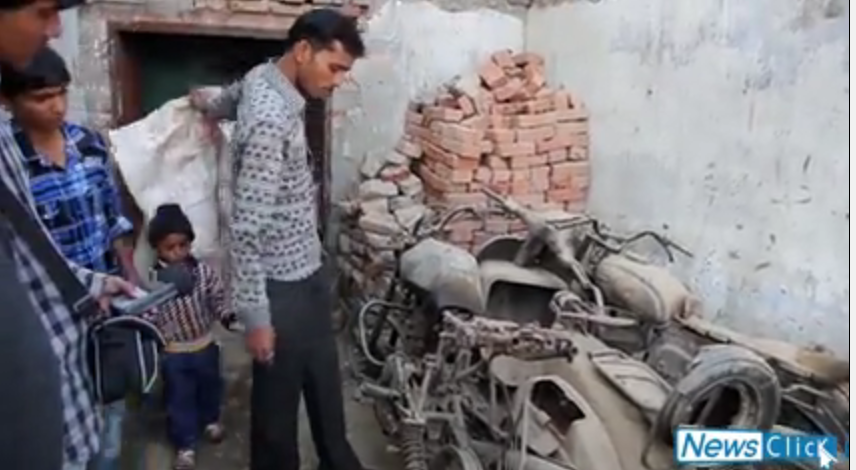

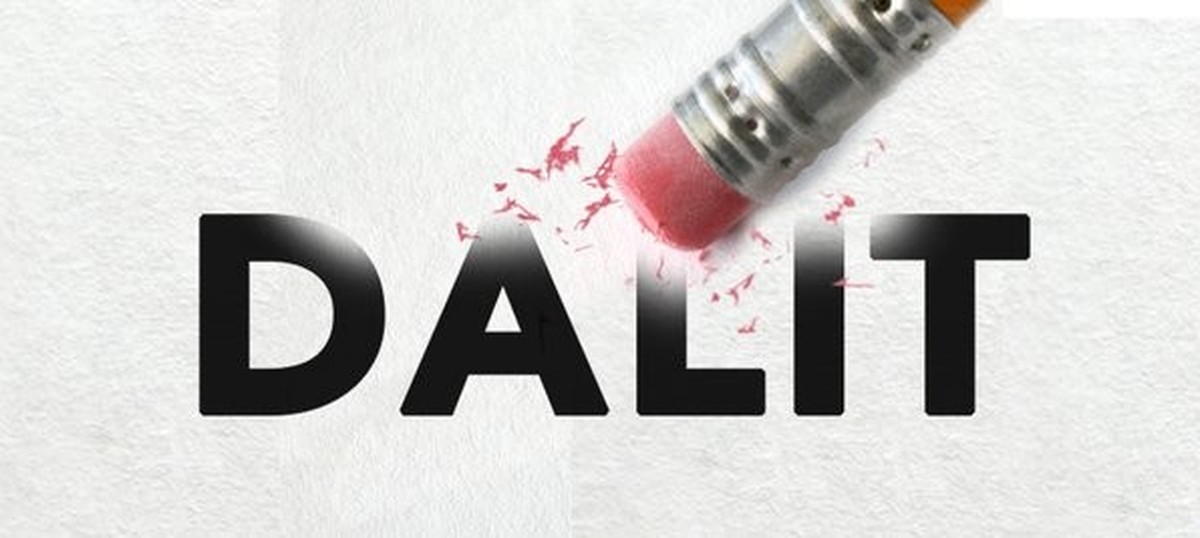
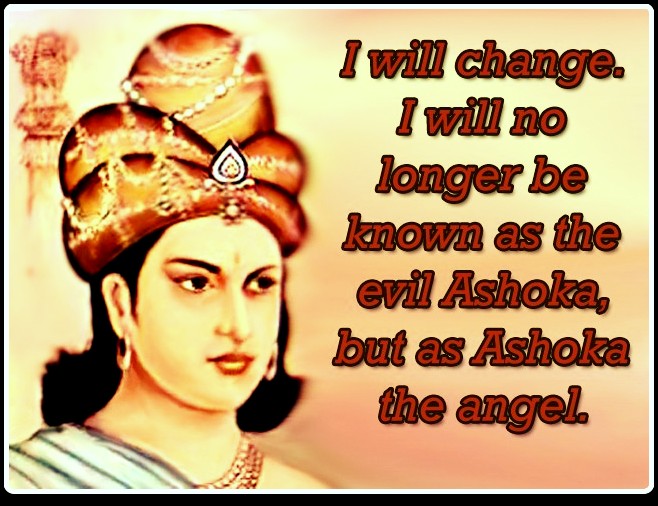
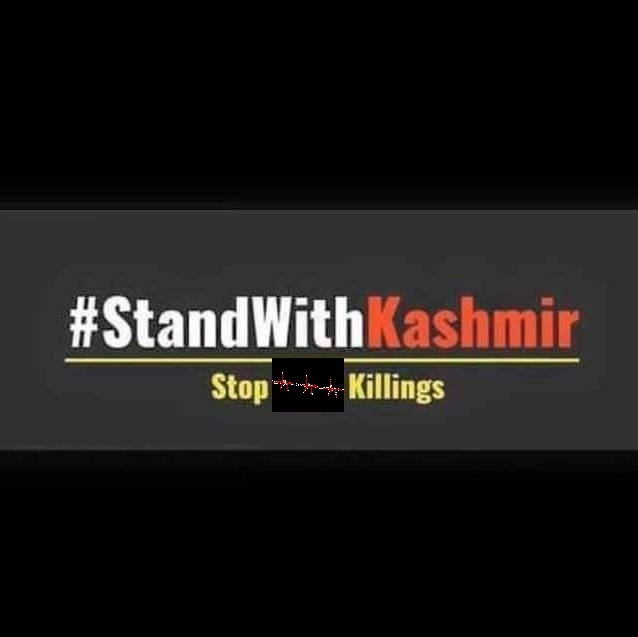
.jpg)
.jpg) s/2(1)jpg
s/2(1)jpg.jpg)
